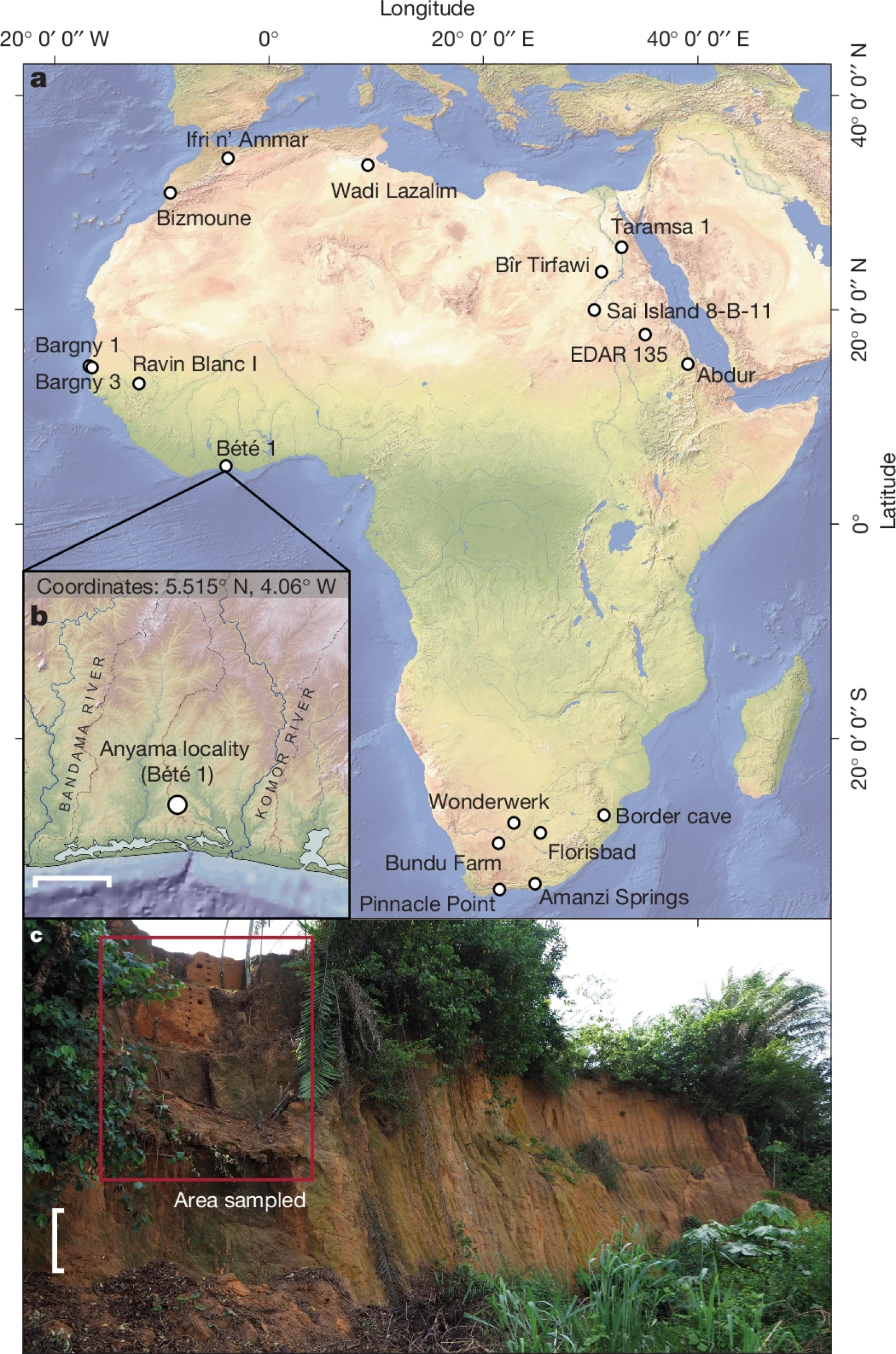Follow us on Google News (click on ☆)

Tropical forests, often considered natural barriers for early humans, may have actually played a key role in their development. An international team of researchers has re-examined a site in Côte d'Ivoire, where stone tools dating back to that time were discovered, confirming a much older human presence than expected.
A discovery that overturns certainties
Until now, the oldest evidence of human occupation in African tropical forests dated back to about 18,000 years ago. In Southeast Asia, traces went back 70,000 years. This new study, published in Nature, pushes this date back to 150,000 years, doubling previous estimates.
The researchers analyzed sediments from the Bété I site in Côte d'Ivoire, where stone tools had been discovered in the 1980s. Using modern dating methods, they were able to establish that these tools were used 150,000 years ago, in a dense forest environment.
This discovery suggests that tropical forests were an important habitat for humans much earlier than previously believed. It also raises questions about how these environments influenced the evolution of our species.

a) Map of African sites dated to MIS 6 (approximately 130–190 ka).
b) Location of the Bété I site.
c) Stratigraphic sequence of Bété I in 2020 after sampling for geochronology and paleoecological analyses.
Tropical forests, an overlooked cradle of humanity
African tropical forests, long neglected in narratives of human evolution, may have been a refuge during periods of climate change. Pollen and plant remains analyses confirm that the Bété I site was located in a dense and humid forest, similar to those found today in West Africa.
The discovered tools, adapted to forest life, show that humans had developed techniques to exploit these environments. This challenges the idea that savannas and open grasslands were the only environments conducive to human evolution.
Finally, this study opens new perspectives on the impact of humans on forest ecosystems. Researchers are now wondering to what extent these early inhabitants modified their environment, laying the groundwork for a lasting interaction between humans and forests.
To go further: what is sediment dating?
Sediment dating is a scientific method used to determine the age of geological layers where artifacts or fossils are found. It relies on the analysis of minerals and radioactive elements present in the soil, such as quartz or uranium isotopes. These elements decay at a constant rate, allowing for precise calculation of the age of sedimentary layers.
In the case of the Bété I site, researchers used luminescence dating techniques, which measure the energy accumulated in quartz grains over time. This method is particularly useful for ancient archaeological sites, as it allows for direct dating of the sediments surrounding artifacts, even in the absence of organic materials.
By combining these results with the analysis of pollen and plant remains, scientists were able to reconstruct the environment of the time. This confirmed that the stone tools found were indeed used 150,000 years ago in a dense tropical forest, providing a more complete picture of the lives of early humans in these environments.